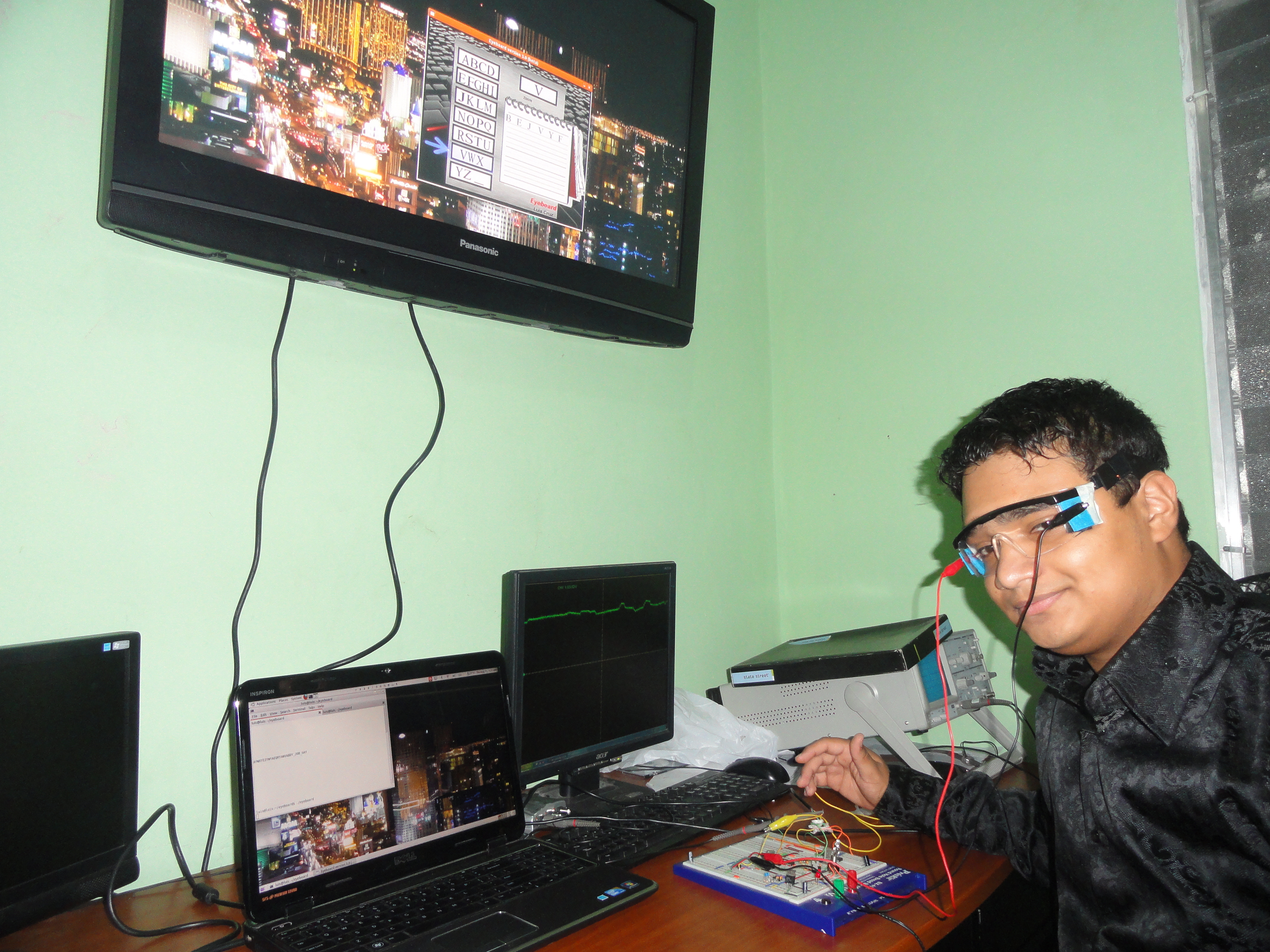Note: Be sure to check out the Kickstarter campaign of the Eyeboard project.
This is an inexpensive yet reliable human-computer interface that detects eye movements using electrooculography (EOG), a biomedical technique based on picking up signals from electrodes placed around the eyes. EOG interfaces let users who can’t manipulate a mouse or trackpad with their hands move a cursor on a computer screen.
An Electrooculogram or EOG is the resulting signal of the potential difference caused by eye movements. The voltage difference is measured between the cornea and the retina. The resting potential ranges from 0.4mV to 1mV and a pair of electrodes are commonly used to detect this signal, but the voltage difference when there’s an eye movement can be as small as just some microvolts. Depending on the eyes’ position, an electrode is more positive or negative with respect to the ground electrode. Therefore, the recorded signal is either negative or positive when moving the eyes.
Due to the fact that an oscilloscope or a CPU cannot detect such small voltages, an EOG system must amplify those voltages in order to get a readable signal. However, other problems such as unwanted signal (noise) arise, such as the 60Hz signal (if you are in America) caused by the AC electrical devices. Therefore, electronic filters should be used in order to attenuate noise after amplification.
The system relies mostly in three important factors: the differential voltage from the electrodes, noise, and offset. In electronics, these three “power sources” can be summed in order to estimate the output voltage.


